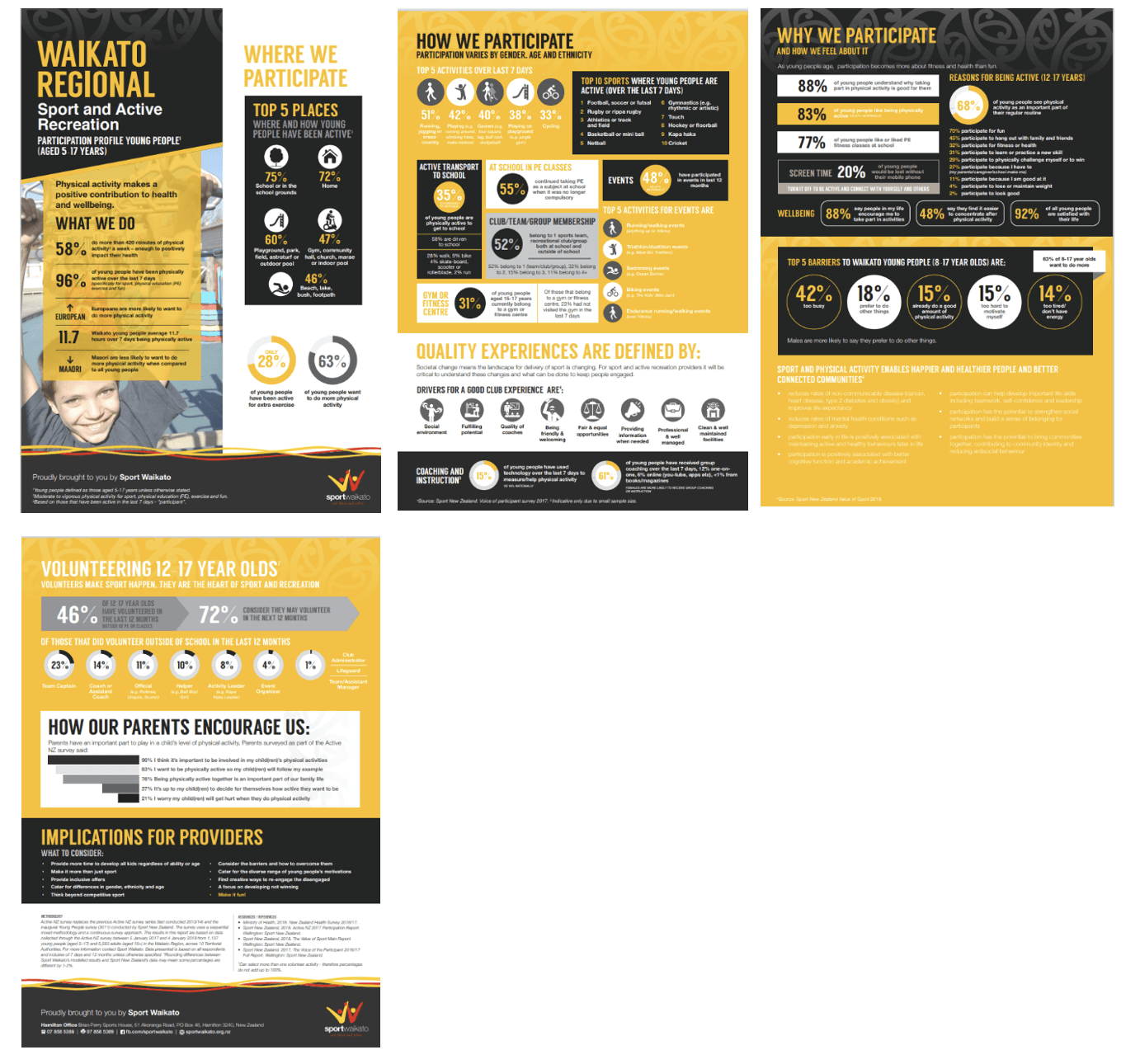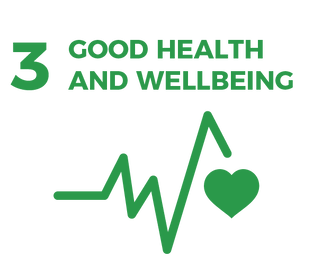Progress Report
SDG 3
January 2023
By 2030, reduce rates of non-communicable diseases and mental illness and improve associated health equity outcomes for target groups
ACHIEVING OUR TARGET
MEANS THAT:
Our people are healthy and well.
We live in an environment that is conducive to good health, and we keep active with a range of sporting, cultural, creative and artistic activities which is a gateway to emotional happiness.
*Specific disease rates to be tracked are to be determined in consultation with the DHB
Global Picture
By April 2022, the coronavirus causing COVID-19 had infected more than 500 million people and killed more than 6.2 million worldwide. However, the most recent estimates suggest that the global number of excess deaths directly and indirectly attributable to COVID-19 could be as high as three times this figure.
The global under-5 mortality rate fell by 14 per cent, from 43 deaths per 1,000 live births in 2015 to 37 deaths per 1,000 live births in 2020, while the global neonatal mortality rate fell to 17 deaths per 1,000 live births in 2020 from 19 deaths per 1,000 live births in 2015, a 12 per cent reduction.
Globally, 74 per cent of all deaths in 2019 were caused by non-communicable diseases. The probability of dying from any of the four main non-communicable diseases (cardiovascular disease, cancer, diabetes or chronic respiratory disease) between 30 and 70 years of age declined from 19.9 per cent in 2010 to 17.8 per cent in 2019. This rate of decline is insufficient to meet the Sustainable Development Goal target.
Tobacco use rates have declined in 150 countries, contributing to the decline of the global average prevalence rate from 24.4 per cent in 2015 to 22.3 per cent in 2020. In 15 countries, tobacco use rates are either steady or still going up.
The global suicide death rate declined by 29 per cent from 13.0 deaths per 100,000 population in 2000 to 9.2 deaths per 100,000 in 2019. Although the available data do not show an increase in suicide rates during the first months of the COVID-19 crisis, the pandemic has had a severe impact on the mental health and well-being of people around the world. In 2020, there was a 25 per cent increase in the prevalence of anxiety and depression worldwide. [1]
Aotearoa | New Zealand Picture
Te Tai Waiora Wellbeing in Aotearoa | New Zealand 2022[2] reports that physical health has steadily improved over time and people in Aotearoa | New Zealand have very high self-reported health. Increases in life expectancy seem to have flattened out over the last 10 years or so, but we still live slightly longer on average than people in the median OECD country. There are wide differences in life expectancy by region, ethnicity and gender.
Healthy life expectancy has now fallen slightly below the OECD median. This is because the number of years we live in poor health has been slowly increasing since 2010, after a long period of decline. People in Aotearoa | New Zealand spend more years of their life in poor health on average than people in most highly developed countries, except for the USA which is an outlier on this measure, and Australia and the UK, which have similar levels to Aotearoa | New Zealand. The pattern of health loss has shifted significantly over time.
Although heart disease still causes substantial death and disability, other conditions such as musculoskeletal disorders have placed a steadily larger health burden on the population. While smoking rates continue to decline, they still contribute to more death and disability than any other controllable risk factor. Smoking rates have declined among all ethnicities but remain highest among Māori and Pacific peoples. Second to smoking in the list of risk factors is obesity, which is increasing, and is contributing to the growing health impacts of diabetes, with a particular impact on older Pacific and Indian people.
There were increases in some ‘unhealthy’ behaviours over the COVID-19 pandemic, which may exacerbate these trends. While many people gave up smoking in the last two years, those who continued increased their consumption. There was an increase in exercise over the last two years as well, but obesity still increased. The pandemic also disrupted many health services, which may lead to more acute health events.
Mental health is another example where longer-term trends may have been exacerbated by the pandemic. There has been a sustained increase in reported psychological distress over the last decade, particularly among women and younger people. A 2021 survey of young people in years 9 to 13 of their schooling reinforced these concerns. Around 28% were experiencing levels of psychological distress that put them at risk of serious mental illness. In the last year, just under half had felt so overwhelmed they could not cope and felt that life was not worth living, one-quarter had seriously thought about suicide and one in 10 had attempted suicide. Results across these survey questions were worse for female, disabled and rainbow young people and, for most questions, rangatahi Māori.
Increasing levels of self-reported psychological distress among youth is not unique to Aotearoa | New Zealand, with similar trends in developed economies around the world. Considerable work has been done to raise public awareness of mental health and wellbeing over the last 10 years, which may mean we are uncovering a longer-standing problem. However, international researchers also point to a range of other factors that may be driving a rise in mental distress for young people. These include concerns about the future, such as climate change, access to housing and stable employment, as well as pressure from increasing expectations to be successful. There could also be impacts from the rise of electronic communication and digital media, and a decline in the number of hours of sleep that young people are getting.
We have also seen a spike upwards in the percentage of young adults experiencing high or very high levels of psychological distress during the onset of the pandemic. Given the longer-term trends, this cannot necessarily be attributed solely to the pandemic, but there may have been impacts from the extended social isolation, economic disruption, and physical health impacts.
There is some preliminary international evidence of a link between COVID-19 infection and long COVID with poor mental wellbeing outcomes. Australia saw a similar upward spike in self-reported mental distress for young people, which has since declined, but not back to pre-pandemic levels. Aotearoa | New Zealand also has high rates of youth suicide relative to other OECD countries. The male suicide rate is about double the female rate, and the rate for rangatahi Māori more than double that for non-Māori young people.
The 2021/22 Aotearoa | New Zealand Health Survey[3] reported that:
88.4% of adults reported they were in 'good health', which is defined as good, very good or excellent health. This is similar to 2020/21, when 88.0% of adults were in good health.
Disabled adults were less likely to report being in good health than non-disabled adults (62.6% and 90.8%, respectively).
According to their parents, 98.0% of children were in good health. This high level of good health among children has been stable over the last decade.
83.6% of adults rate their life satisfaction highly (at least 7 out of 10).
Groups that rated their life satisfaction lower than the average (7.8) were: disabled adults (6.9), those living in the most deprived areas (7.6), and those aged 15–24 years (7.6).
Smoking rates have declined for all ethnic groups except Pacific people, but large inequities remain. For example, daily smoking rates were as follows: Māori (19.9%), Pacific (18.2%), and European/Other (7.2%)
18.8% of adults had a hazardous drinking pattern in 2021/22.
Most adults experienced no/low (70.8%) or moderate (18.0%) levels of psychological distress in the four weeks prior to the 2021/22 survey. However, one in nine adults (11.2%) experienced high or very high levels of psychological distress.
Nearly one in four (23.6%) young people aged 15–24 years experienced high or very high levels of psychological distress in 2021/22, up from 5.1% in 2011/12.
High or very high levels of psychological distress was more common in disabled adults than in non-disabled adults (32.8% and 9.2%, respectively).
Just over half of adults (51.9%) met physical activity guidelines, while 12.8% did little or no physical activity in 2021/22.
43.5% of children (5-14 years) used active transport (for example, walking and cycling) to get to and from school in 2021/22
According to Organisation for Economic Co-operation and Development (OECD) statistics, when asked ‘How is your health in general?’, 86% of people in Aotearoa | New Zealand reported to be in good health, much more than the OECD average of 68% and one of the highest scores across the OECD.
[1] https://sdgs.un.org/goals/goal3
[2] Te Tai Waiora: Wellbeing in Aotearoa Aotearoa | New Zealand 2022 (treasury.govt.nz). Detailed references are not provided here.
[3] Annual Update of Key Results 2021/22: Aotearoa | New Zealand Health Survey | Ministry of Health NZ
Waikato Picture
Specific regional data for hunger and poverty is limited, however the information available shows persistent deprivation, poverty and hunger are significant issues in parts of the region. COVID-19 and inflation has particularly affected poverty and lack of access to good food.
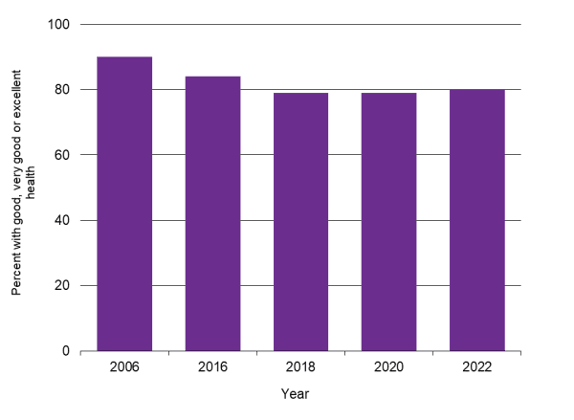
Compared to 2006, Waikato regional survey respondents in 2022 were less likely to rate their overall health positively (80% compared to 90% in 2006).
Between the most recent 2020 and 2022 surveys, the percentage of respondents who rated their mental health positively declined by a statistically significant amount, from 75% to 70%. This likely reflects Covid-19 impacts.
Across the Waikato region in 2022:
The percentage of people who rated their overall health positively ranged from 73% for Hauraki district respondents up to 89% for Thames-Coromandel district respondents.
oRespondents who identified with the Aotearoa | New Zealand European/ Other ethnic group were more likely to rate their overall health positively (82%); and respondents who identified with the Māori ethnic group were less likely to rate their overall health positively (71%).
Results from the NZ Health Survey for the 2017-20 period show around 86% of respondents from with the Waikato DHB area considered their general health status to be good, very good or excellent, like the national average 87%.

Life expectancy in the Waikato region is similar to the national average: approximately 80 years for males and 83 years for females. Gains in life expectancy since the mid-1980s can be attributed to better living standards and improved health care.
The difference in life expectancy for males and females has been declining over time. In 1990-92, females in the Waikato region had a life expectancy 6 years greater than males, but by 2017-19 this had narrowed to 3.5 years.
There remain marked differences in life expectancy between ethnic groups, with life expectancy for Māori remaining around eight years lower than that of the non-Māori population.
There is some variation in average life expectancy between different territorial authority areas in the Waikato region, ranging from around 82-83 years in Otorohanga, Thames-Coromandel, Waipā and Matamata-Piako down to less than 80 years in South Waikato, Rotorua and Waitomo. These differences may be for a wide variety of reasons including age profiles and socio-economic status.
Aotearoa | New Zealand’s life expectancy is around two years higher than the Organisation for Economic Co-operation and Development (OECD) average of 80 years.

Waikato regional survey respondents rated their overall quality of life lower in 2022 than in the 2006 survey (86% compared to 90% in 2006).
Across the Waikato region in 2022:
The percentage of people who reported a good, very good or extremely good overall quality of life ranged from 76% in Waitomo district up to 91% in Thames-Coromandel district and 93% in the rural part of the Rotorua district that is within the Waikato region.
Respondents who identified with the Aotearoa | New Zealand European/ Other ethnic group were more likely to rate their overall quality of life positively (89%); and respondents who identified with the Māori and Pacific ethnic groups were less likely to rate their overall quality of life positively (76% and 70% respectively).
oRespondents aged under 25 years were less likely to rate their overall quality of life positively (78%) and respondents aged over 65 years were more likely (91%).
Based on a similar question in the 2021 Aotearoa | New Zealand General Social Survey, drawn from a Aotearoa | New Zealand-wide sample, respondents from the Waikato region rated their overall life satisfaction an average of 7.8 compared to 7.7 for Aotearoa | New Zealand overall (sampling error was ±0.2% for Waikato results at 95% confidence level). Based on NZGSS time series data since 2014, there is little difference between regions and little change over time, at least in the short-term.
In general, Aotearoa | New Zealanders are more satisfied with their lives than the OECD average. When asked to rate their general satisfaction with life on a scale from 0 to 10, Aotearoa | New Zealanders gave it a 7.3 grade, higher than the OECD average of 6.7.
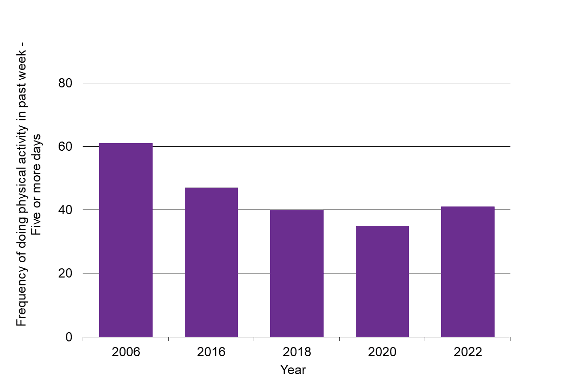
Compared to 2006, Waikato regional survey respondents in 2022 were less likely to report having been physically activity on five or more of the past seven days (41% compared to 61% in 2006). This is despite a statistically significant recent improvement between 2020 to 2022.
Across the Waikato region in 2022:
The percentage of people who reported having been physically activity on five or more of the past seven days ranged from 33% in Hamilton East ward up to 64% in Waitomo district.
Respondents aged 25-49 were less likely to report having been physically active on five or more of the last seven days (35%), whereas respondents aged 65-plus were more likely to have regular physical activity (45%).
Respondents who identified with the Aotearoa | New Zealand European/ Other ethnic group were less likely to report having been physically active on five or more of the last seven days (39%); and respondents who identified with the Māori ethnic group were more likely (47%).
Aotearoa | New Zealand Health Survey results also show a decline in physical activity levels in the Waikato DHB region between 2006/07 and 2014-17.
According to the Active Aotearoa | New Zealand Survey 2013/14, 63 per cent of adults in the Waikato region take part in sport and recreation in any given week – significantly below the Aotearoa | New Zealand average of 74 per cent. Only 50% of Waikato survey respondents said they were interested in trying new or doing more sport and recreation activities, lower than every other region and well below the national average of 66%.
Physical inactivity was estimated in 2013 to cost the Waikato regional economy $106 million every year. Due to increasing health costs and prevalence of obesity, this figure is likely to be substantially higher in today’s terms.
Other Key Data Sources
Data for the Waiakto DHB (https://reports.hqsc.govt.nz/HSI/) shows from 2019-21:
A 20% reduction in potentially avoidable hospitalisations for children under 5
oAn 8.5% reduction in potentially avoidable hospitalisations for adults 45-64
A 13% reduction in the number of two-year-olds who are fully immunise
A 12.5% improvement in under 25-year-olds seen within 3 weeks for mental health
A 4.9% increase in planned surgery, a 12.1% improvement for minor procedures
A 2.3% reduction in the number of days spent in hospital for unplanned care
4.7% fewer people reported they can get care when they need it
A recent report from Creative Waikato[1] explored the impact of arts, culture and creativity on the people of the Waikato Region concluded that:
On average, Waikato residents who self-report having a high level of engagement with arts, culture and creativity have higher wellbeing than those who have little or no engagement.
For all Waikato residents, engagement with arts, culture and creativity has a positive relationship with overall wellbeing. The more often they attend, create or participate in artistic and cultural events, the higher their wellbeing is likely to be. This holds true regardless of engagement level or relationship with the creative sector.
Waikato residents who believe they have greater access to arts, culture and creativity are also more likely to have higher overall wellbeing.
This relationship between perceived access and wellbeing exists for all Waikato residents, regardless of how frequently they are attending, creating or participating in arts, cultural and creative activities.
Mental wellness is one of the strongest predictors of overall wellbeing for all Waikato residents, regardless of level of engagement with arts, culture and creativity. However, residents have reported feeling anxious, angry and unhappy, indicating that these needs are not currently being addressed.
Regardless of how passionate or involved someone is with arts, culture and creativity, all
Waikato residents recognise the value that these things contribute to their everyday life, as well as that of their whānau and children.
Sport Waikato Regional Profile Data[2] [3]
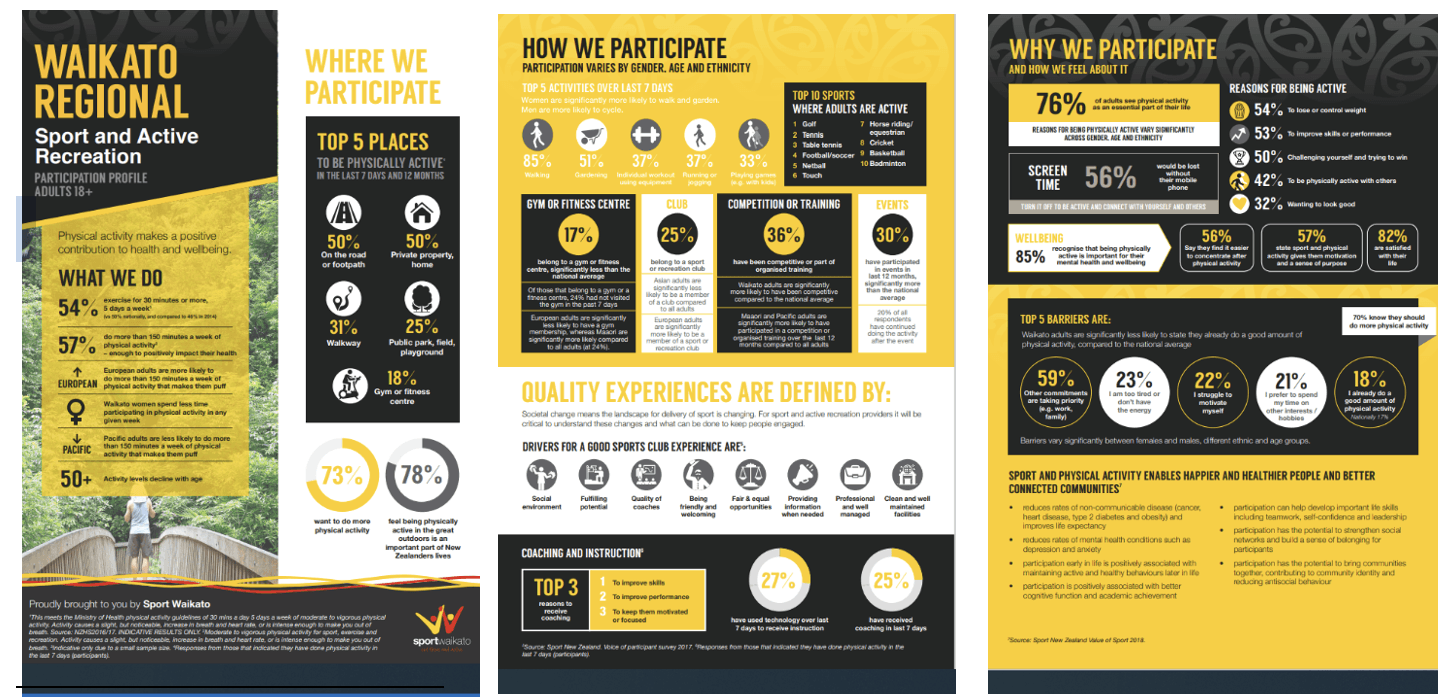
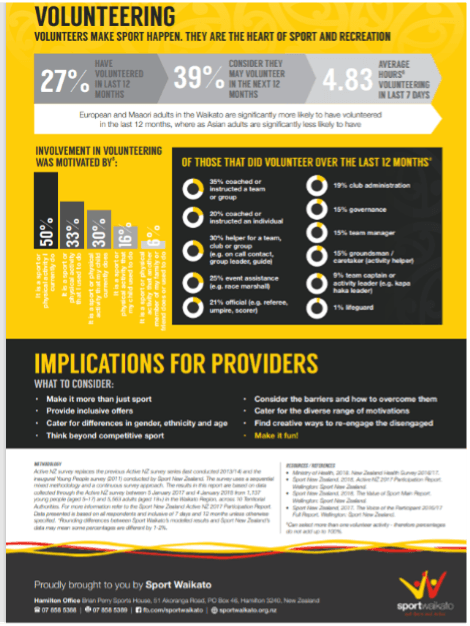
YOUTH 5 - 17
